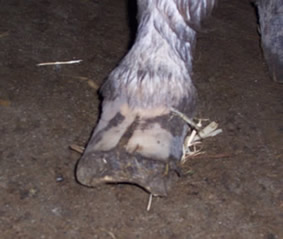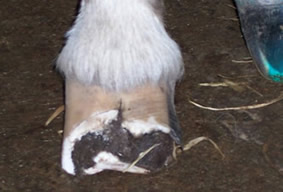Newsletter Spring 2005
The horrendous Asian Tsunami disaster which bridged 2004 and 2005 and which took such an awesome toll on human life, also left thousands of animals dead, dying, homeless and injured and we applaud the many dedicated animal welfare societies who launched massive rescue projects to help when, where and what they could.
Two of these societies, Karuna and the Visakha SPCA, both of India, kept in touch by email and relayed a harrowing tale over the weeks following the disaster. From all of us who wished we could help more, we thank you for the gruelling and gruesome task you took upon yourselves.
Apparently, most cats and dogs escaped with their lives as they sensed the danger in advance and ran away. In some villages the dogs which were previously considered low-life, are now regarded with esteem as they are credited with having saved, perhaps, hundreds of lives. Their strange, nervous behaviour caused many people to take note and escape to higher ground. Regrettably, the more "valuable" animas - cattle, goats, sheep and donkeys mostly perished because they were tied or tethered near the houses.
In perspective, the loss of two of our very elderly donkeys seems very small by comparison, but was none the less sad to all those who knew 45 year old Eddie (Edward Fluffy Lugs), who had been with us only a few months when he died unexpectedly just before Christmas, of a massive stroke, and Mabel, another very elderly donkey who had been with us since the Spring. Mabel suffered chronic breathing problems but kept rallying round: happily she was out in the field grazing when she decided to leave us for pastures elsewhere. When our work is to take into care old, sick and damaged animals it is inevitable that there will be frequent losses but we never seem to get used to it: each animal is special and all find their own distinctive way into our hearts.

FRIEND IN NEED (FRIEND INDEED!)
At the beginning of December we were happy to accommodate a favour for Linda Thompson, Chief Welfare Officer for the Donkey Sanctuary of Ireland, covering the Northern counties of Eire. Linda was taking a well earned holiday and needed help looking after a very damaged donkey called Friend, who is too frail to travel the journey to Co Cork but too full of the will to live for euthanasia to be an option at this stage.
Friend soon found his special place in the hay barn which he shares with a rota of other elderly and quiet donkeys. Here he is deep-bedded in very thick straw where he enjoys regular meals, loving attention from all visitors (and ourselves of course!) and his favourite radio programmes. he is about 20-25 years old, fawn in colour and an absolute dote. As a very tall and long backed donkey he has probably been asked to pull and carry loads far in excess of his capabilities.
Undoubtedly, he has suffered chronic laminitis which has not been addressed in any way. His front hooves are deformed and his shoulders out of alignment. The Donkey Sanctuary sanctioned X-rays of the hooves which show a disintegration of the pedal bone and damage to the pastern joints, yet this amazing donkey still gives every sign of wanting to be alive and interacting. Painkillers are essential so we know he is on borrowed time. We can only do our best to make each and every day count as special. His enormous bray of welcome when he sees his morning food bucket arrive convinces us that he really appreciates the extra TLC.

Front hoof showing the cracks and ragged
edges under which dirt and bacteria are
trapped
SUGAR AND CHIP
On the 1st December we were happy to admit two donkeys called Sugar and Chip for remedial hoof care. Serious white line disease was present in both donkey's front hooves, though Sugar was by far the worst.
This disease is caused by a bacteria that enters the hoof along the 'white line' (which is clearly visible on the underneath of a healthy hoof), thereby separating the hoof wall from the laminae which are then exposed to further infection. As the bacteria relishes warm, damp, dark conditions, the only cure is to cut away the infected area in order to expose it to the light: in sugar's case this was two thirds of the hoof wall. Chip got off lightly with only about half his hoof wall removed. Naturally this is a job for a very skilled farrier and must be followed up with scrupulous aftercare to ensure the hooves stay clean and dry until the hoof wall begins to grow back down, plus dietary supplements to assist healthy growth.

One of Sugar's front hooves with the hoof
wall cut away to show the mess of bacteria
underneath
Abscesses were also present in all four of Sugar's hooves and in Chip's front two hooves, so there is little doubt these two little donkeys would have been in serious trouble had their owners not cared enough to seek help and they are to be congratulated for taking the decision to send them into care and for generously meeting all expenses incurred and more. Sugar and Chip are now safely back home where they will continue to be attended every two months by a first class farrier. This is one of those cases where prevention is unquestionably better than cure so the rule of thumb is:
1. Always provide a clean dry place where the donkey (or pony/horse) can get off wet or muddy land and . . .
2. Insist on a qualified, registered farrier attending to check and trim hooves every 2-3 months.
It might seem like a lot of trouble but it is infinitely more comfortable for your animal friend, and cheaper on the pocket in the long term.